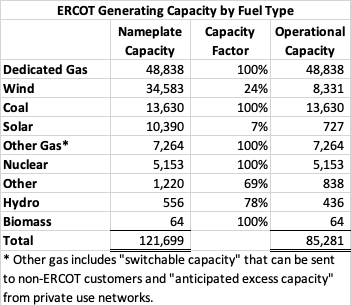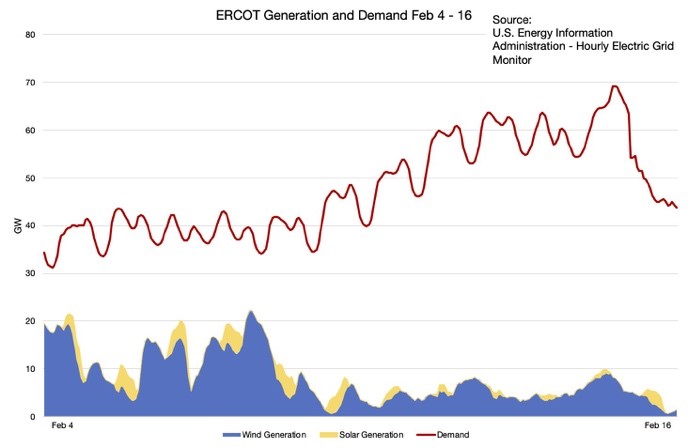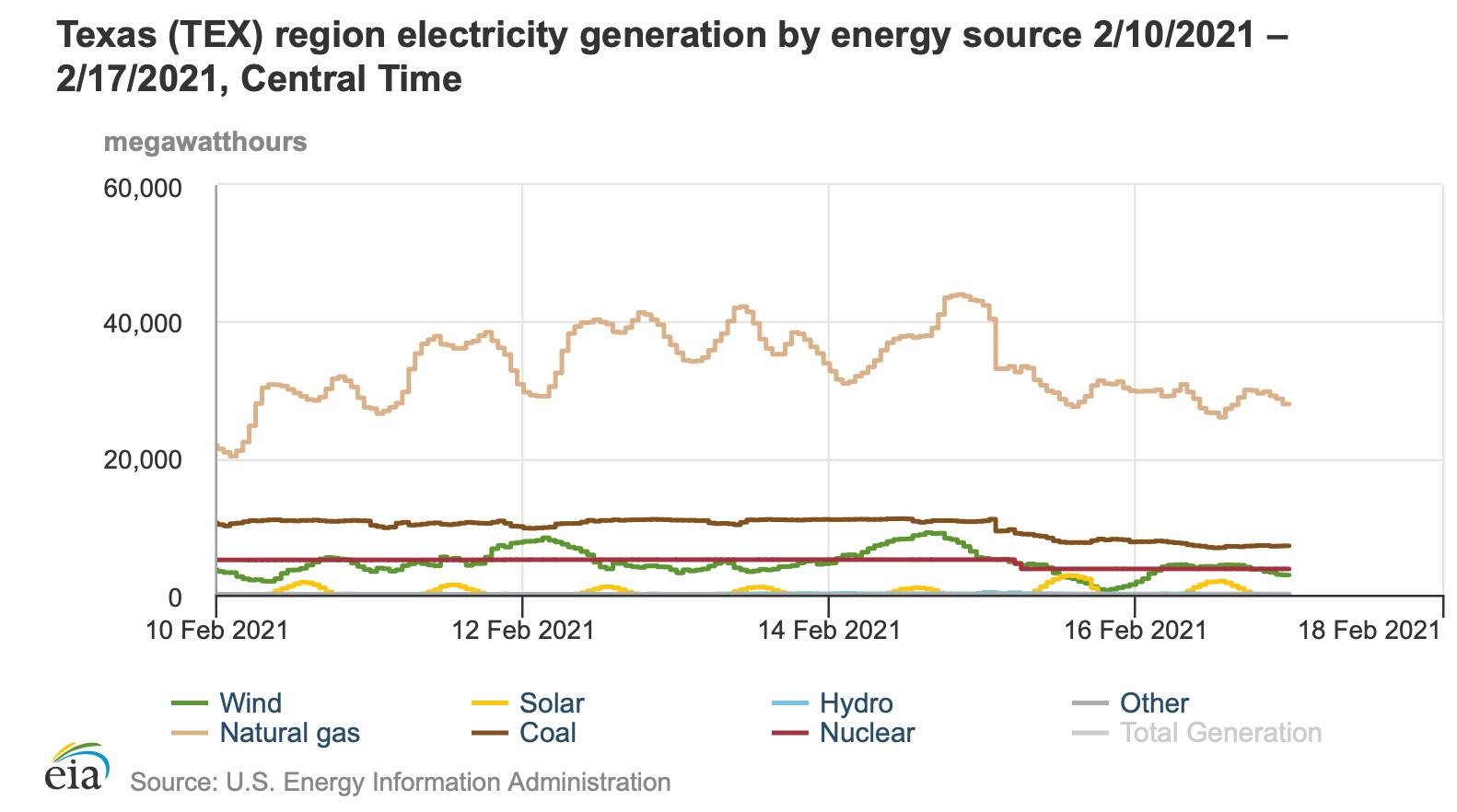
 











|
Signature Sponsor


The State of Texas is currently suffering from a catastrophic power grid failure that’s left 1 in 3 customers without electricity for days. In my hometown of Houston, the fourth-largest city in the country, over 50% of households have suffered. I only lost power for 40 hours and consider myself fortunate. While it’s fair to say I’m irritated by the inconvenience, this article will focus on incontrovertible facts that prove ERCOT’s reckless reliance on unreliable wind power caused The Great Texas Blackout of 2021. The ERCOT grid has 85,281 MW of operational generating capacity if no plants are offline for scheduled maintenance. Under the “Winter Fuel Types” tab of its Capacity, Demand and Reserves Report dated December 16, 2020, ERCOT described its operational generating capacity by fuel source as follows:
Since power producers frequently take gas-fired plants offline for scheduled maintenance in February and March when power demand is typically low, ERCOT’s systemwide generating capacity was less than 85 GW and its total power load was 59.6 GW at 9:00 am on Valentines Day. Over the next 11 hours, power demand surged to 68 GW (14%) and all hell broke loose. Over the next 24 hours, statewide power production collapsed to 43.5 GW (36%) and millions of households were plunged into darkness in freezing weather conditions. Earlier this week I read several tweets from Alex Epstein, author of “The Moral Case For Fossil Fuels,” that suggested unreliable wind power was a principal cause of the Texas blackouts. One of the more understandable images Mr. Epstein published shows how wind and solar collapsed completely as storm-related electricity demand surged.
While I think Mr. Epstein’s tweets and graphs offered a compelling visual depiction of the supply and demand dynamics that lead to the Great Texas Blackout of 2021, I’m a numbers guy who prefers time-stamped precision. So, I went to the US Energy Information Administration’s website and searched for hourly data on electricity production by fuel source in the State of Texas. The first treasure I found was this line graph that shows electricity generation by fuel source from 12:01 am on February 10th through 11:59 pm on February 16th.
The second and more important treasure was a downloadable file that contained the hourly data used to build the graph. An analysis of the hourly data shows:
The following table summarizes the capacity losses of each class of generating assets. The Great Texas Blackout of 2021 was a classic domino-effect chain reaction where unreliable wind power experienced a 93% failure rate hours before other power sources began to buckle under the strain of an unprecedented winter storm. There were plenty of failures by the time the dust settled, but ERCOT’s reckless reliance on unreliable wind power set up the chain of dominoes that brought untold suffering and death to Texas residents. Conclusion Over the last year, wind stocks like Vestas Wind Systems (VWDRY) TPI Composites (TPIC) Northland Power (NPIFF), American Superconductor (AMSC), and NextEra Energy (NEE) have soared on market expectations of unlimited future growth. As formal investigations into the root cause of The Great Texas Blackout of 2021 proceed to an inescapable conclusion that unreliable wind power is not suitable for use in advanced economies, I think market expectations are likely to turn and turn quickly. I won’t be surprised if the blowback from The Great Texas Blackout of 2021 r |
 







|


